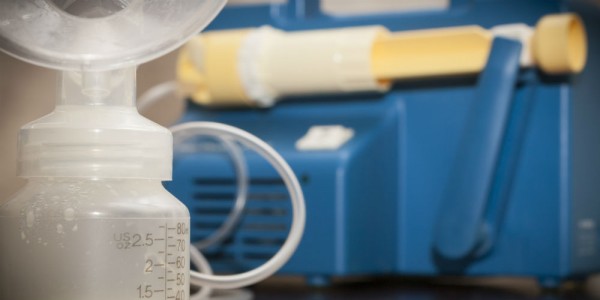In the 2-5 days following delivery, a woman’s body will begin to lactate in anticipation of feeding a newborn in the most primal, natural way. Nursing an infant can be one of the most beautiful experiences in the world . . . but what happens when there is not a newborn to nurse?
Women who place deal with lactation in many different ways. Some will do everything possible to prevent their milk from ever coming in. Others will take full advantage (with the support of the adopting family) and still supply nourishment to their birth child by pumping and giving the milk to the adopting family. With a range of options, how can you choose which would be best for you?
Knowledge is power. It is important to explore all options available to you, especially any that would involve medical intervention or the potential for increased emotional trauma (which may not happen to everyone).
I chose to breastfeed my little boy while in the hospital, then used natural remedies to decrease and dry my milk supply over the course of a couple of weeks.
Here are 6 practical tips for dealing with lactation after placement—for those with a desire to lactate post-placement, and those who do not.
First, for those who are planning on lactating after placement:
1. If you feel a strong desire to breastfeed and/or continue to nourish your child after placement and you know that the emotional toll would not be too much, make a plan with the adopting family to continue to supply them with breastmilk. As open adoption has become more widely accepted and desired, many are choosing this option. It becomes much easier to pump and supply your birth child with breast milk if you live in close proximity—usually a few hours away at most. Other families have been able to successfully ship frozen expressed milk across the country with the use of dry ice and styrofoam packaging.
2. If you cannot supply your birth child with your breastmilk but still feel the desire to lactate for a period of time, another wonderful (and selfless) option is to pump and donate to a milk bank. There are many different milk banks across the US and other countries that pasteurize and supply donated breastmilk to NICUs for fragile, tiny babies whose tummies many not be able to handle formula. Many birth mothers have found this option to be therapeutic, as they are helping babies thrive and grow. Acts of service are beneficial for working through grief, and donating breast milk is a way to provide an indispensable act of service to babies and families who desperately need it.
3. Another option for dealing with lactation, if desired, is to breastfeed in the hospital and then discontinue after placement. Many birth mothers choose this option as another way to bond with the child they are placing. By nursing the first couple of days, a birth mother can provide colostrum, a clear golden substance that is produced prior to milk coming in. It is packed full of incredible health benefits and antibodies to give a newborn an immune boost. Be aware that if you choose to breastfeed pre-placement, engorgement when your milk comes in can be worse and it will take longer to stop lactating because your body has been signaled to provide milk for a newborn. This is still a great option for those who feel strongly about breastfeeding and have prepared for the added grief that may come.
Often, breastfeeding and lactating hold too much of an emotional connection to a child who has been placed. There is absolutely nothing wrong with realizing that it is not something you want to do. It is important to make a decision that you are comfortable with and that you do not feel pressured one way or the other, just as with your entire adoption plan.
Pregnant and considering adoption?
Get your free adoption benefits and support bundle

The following tips are ways to prevent or discontinue lactation after placement.
1. Be aware that your milk will come in, and make a plan with your medical provider. Prescription drugs are now discouraged to suppress lactation, but your practitioner can give you practical ways to suppress lactation using over-the-counter drugs such as Benadryl and antihistamines.
2. If you prefer a more natural approach to suppressing lactation, peppermint and sage essential oils are commonly used. Consult an expert and always be sure to talk to your doctor before using essential oils soon after pregnancy. Other natural remedies include placing chilled, crushed cabbage leaves inside your bra (and changing them frequently), and being sure to avoid excess amounts of lactation-friendly foods—such as steel-cut oatmeal and beer.
3. Finally, on top of the tips above, the most tried and true ways to suppress lactation are to wear a tight-fitting bra (sport types are best, and less uncomfortable), keep warmth away from your breasts (especially while showering, keep the water at your back) to discourage letdown, and use ice packs to soothe sore breast tissue.
If you are unsure about how best to deal with lactation after placement, get in touch with a lactation consultant. Most hospitals will send you home with resources for local consultants, or you can search online for one in your area—their services are usually free. These knowledgeable consultants not only help to increase milk supply for women who desire to lactate, they also know the best and healthiest ways to suppress lactation.
If you are pregnant and considering placing your child for adoption, you can connect with an adoption professional who will provide you with a listening ear and guidance at no cost. Click here to request contact.


